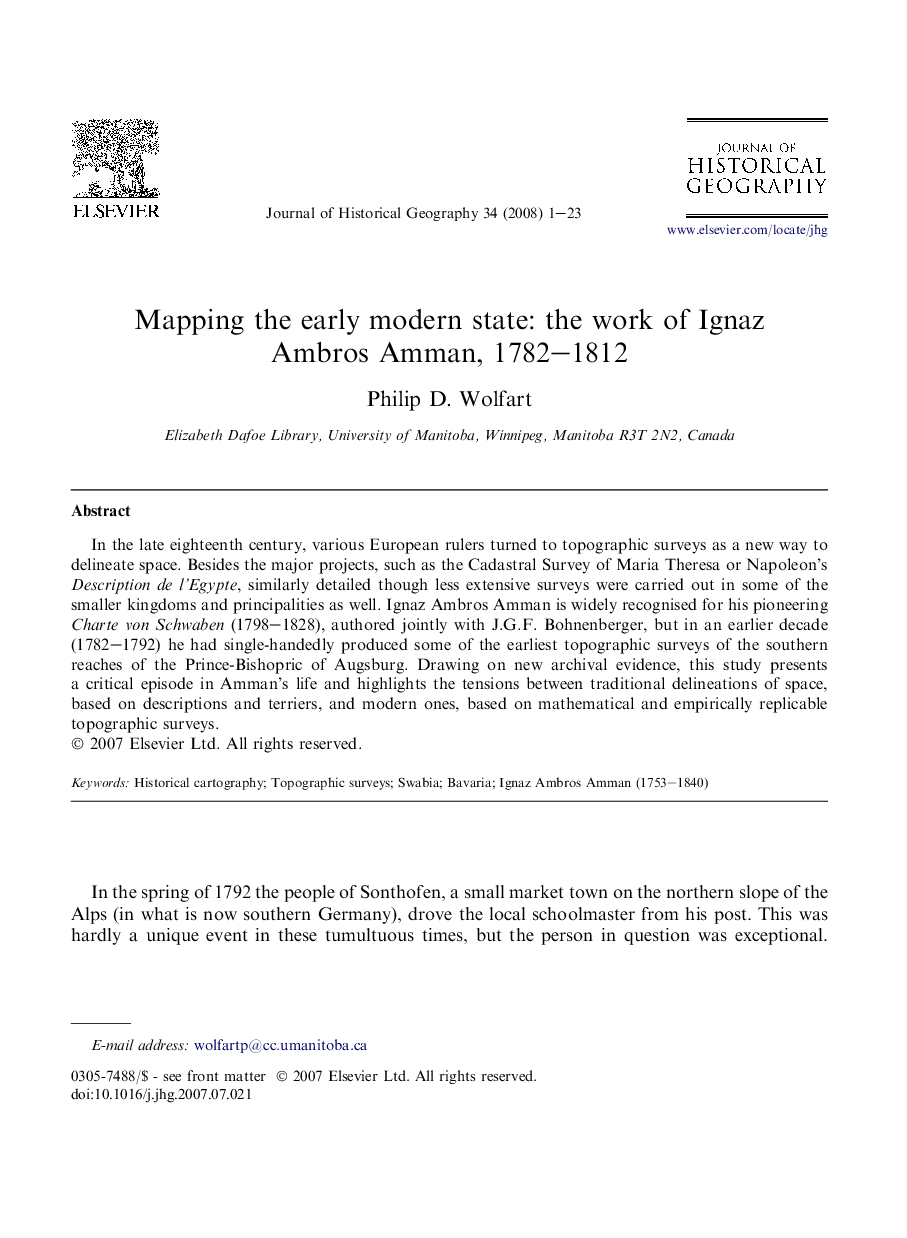| Article ID | Journal | Published Year | Pages | File Type |
|---|---|---|---|---|
| 1039215 | Journal of Historical Geography | 2008 | 23 Pages |
In the late eighteenth century, various European rulers turned to topographic surveys as a new way to delineate space. Besides the major projects, such as the Cadastral Survey of Maria Theresa or Napoleon's Description de l'Egypte, similarly detailed though less extensive surveys were carried out in some of the smaller kingdoms and principalities as well. Ignaz Ambros Amman is widely recognised for his pioneering Charte von Schwaben (1798–1828), authored jointly with J.G.F. Bohnenberger, but in an earlier decade (1782–1792) he had single-handedly produced some of the earliest topographic surveys of the southern reaches of the Prince-Bishopric of Augsburg. Drawing on new archival evidence, this study presents a critical episode in Amman's life and highlights the tensions between traditional delineations of space, based on descriptions and terriers, and modern ones, based on mathematical and empirically replicable topographic surveys.
